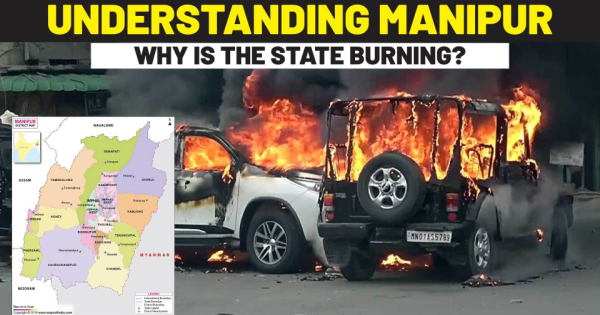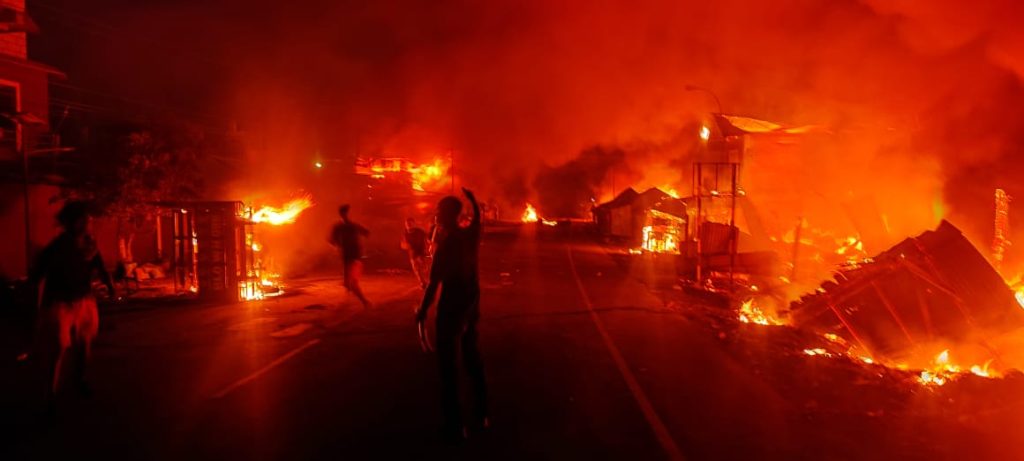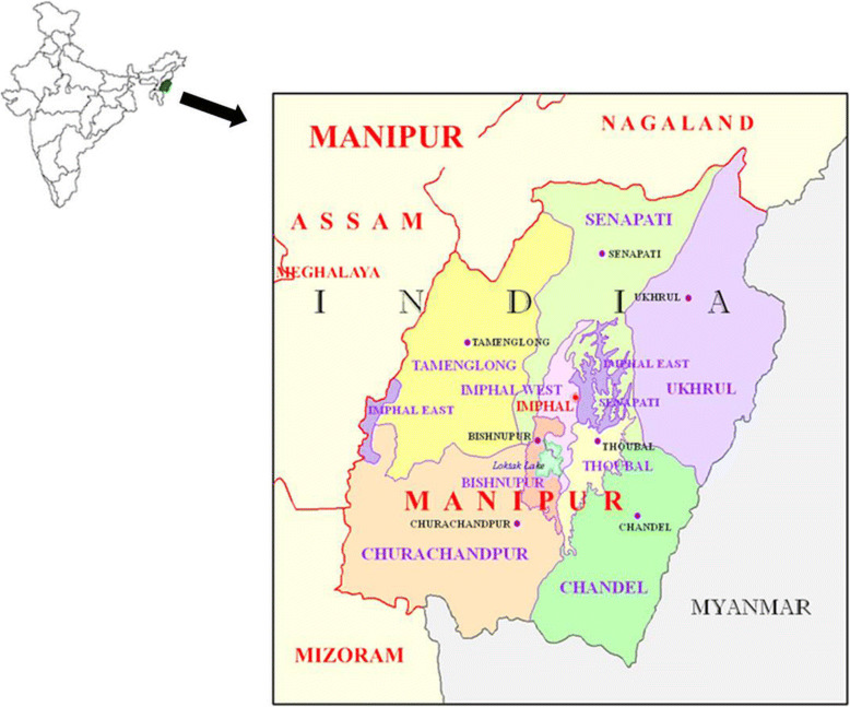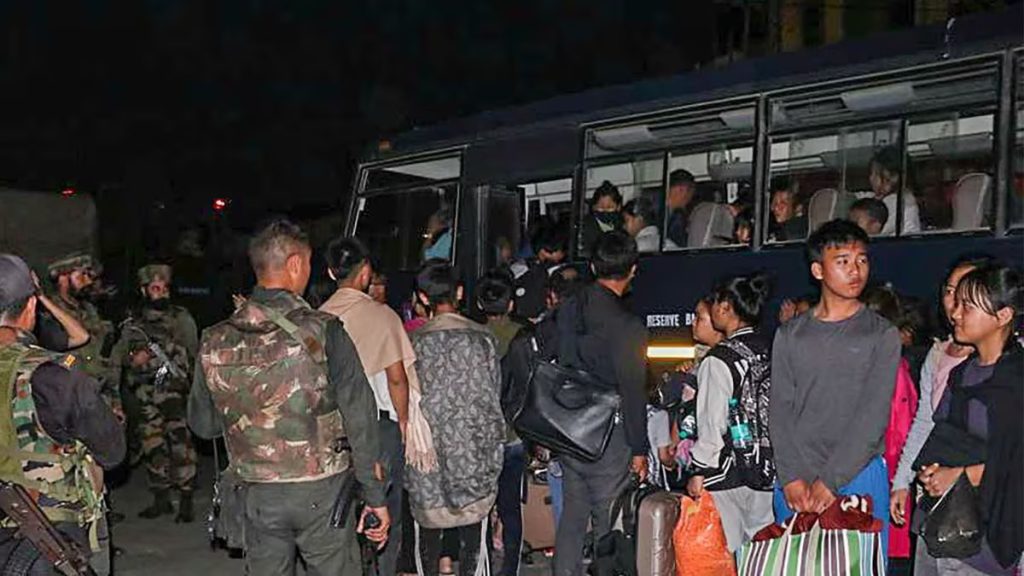Manipur is facing a war-like situation for the past few days. Photos and videos are being circulated on social media and by seeing them one can see how the state has been suffering where people are fighting with their own. In this article, we will learn about the dynamics of maipur and why such riots take place from time to time in the northern eastern state.
Merging of Manipur
Manipur was fully merged with India on 15th October 1949 but it took 2 decades to become a fully-fledged state in 1972. Though known for its ethnic and cultural diversity, the state has seen various riots and clashes between the communities and ethnic groups living there. The major community living in the state is Meiteis who embraces Hinduism. The Meiteis Community constitutes 50 percent of the total population of the State but lives in only one-tenth of the total land of the State. There are about 30 different tribes inhabiting Manipur. Some of the larger tribes include Nagas, Kukis, Paites, Thadous, Simtes, Vaipheis, Raltes, Gangtes, and Hmars. Unlike the Meiteis, who occupy the Imphal Valley, these tribes generally inhabit the surrounding hill districts.
Problems in Manipur
Various reasons are there which add up to the problems of Manipur. For example Separatist Insurgency, Ethnic Conflicts, and religious Divide. Separatist Insurgency is due to the fact that the merger of the State and the Union of India which was delayed by 23 years caused discontent among the Meiteis who felt that their identification with ‘Hindu India’ brought them no political or economic benefits. This gave rise to secessionist tendencies among a section of the Meiteis and a number of separatist groups emerged thereafter. Also, various locals think that they are being dominated by outsiders or the migrated Muslim community leading to an affected political and economic growth.
Pakistan Backing in 1968: During the late 60s, a group named UNLF (United National Liberation Front) which was led by Oinam Sudhir Kumar established a government out of the state named as Revolutionary Government of Manipur which was headquartered in Sylhet in Bangladesh then East-Pakistan. The Revolutionary Government of Manipur (RGM) was backed by Pakistan whose main objective was to liberate Manipur through an armed struggle.
China’s Support in 1975: Some Meitei rebels were jailed in Tripura jails with Naxalites and other left-wing fanatics. They were brainwashed into Maoist ideology there. Following their release from prison, a group of Meitei rebels traveled to Lasha in Tibet in 1975 to seek Chinese support. After getting significant guerilla warfare training, the unit returned to Manipur in 1976. Bisheswar created the People’s Liberation Army (PLA) on September 25, 1978, with the goal of achieving independence through armed conflict.
Aspects Related to Insurgency and Militancy
- To address the problem, the entire Imphal Valley was declared a disturbed area in September 1980, and the Armed Forces (Special Powers) Act, 1958, was imposed on the Valley. The PLA, PREPAK, and KCP were designated as illegal groups on October 26, 1981.
- As a result, the majority of the leaders and cadres were arrested or executed. Security forces were also successful in demolishing many Meitei insurgent groups’ bases. Following these failures, the PLA struggled to maintain pace, despite intermittent low-level violent activity.
- Other Meitei rebel groups, however, such as PREPAK and the KCP, found it difficult to recover from casualties sustained during counter-insurgency operations.
- The insurgency, militancy-related incidents, and ethnic confrontations erupt on a regular basis, disrupting the tranquility of the state.
- Thousands of people have died as a result of these unrests during the last thirty years. Several organizations’ cadres account for about half of the casualties. The remaining 50% is made up of security forces and citizens.
- In 2016, the Ministry of Home Affairs dispatched an additional 4,000 paramilitary forces to quell the unrest. When the circumstance calls for it, the security personnel are dispatched.
- Economic blockades are frequently used as a form of protest by parties operating in the state. Because of the disruption in the supply of basic commodities, these blockades cause considerable suffering in the landlocked state.
- The Union government begins attempts on a regular basis to hold negotiations with the various factions in order to reach a compromise and find a solution to the current difficulties.
- The state is frequently designated as a “disturbed area” due to the enforcement of the Armed Forces Special Powers Act (AFSPA). Another point of disagreement between the administration and insurgent/militant groups.
- The state’s simmering conflict creates periodic violence and has the potential to negatively damage the security situation in the state and the Northeast region in general.
What is the Issue and Fight Between Meitei and Other Community Groups?
The Meitei group which forms a majority of the population in the state seeks to have ST status, their contention being that when they were given the status of ST before the merger of the state with the Union of India, and after the merger they lose their status which led to the marginalizing of the community on various grounds. According to the community, in order to protect their culture, heritage, and their land, the ST status should be given to them.
On the other hand, various other groups are claiming and opposing this status as according to them the Meitei Group is already in a larger proportion and constitutes a larger proportion of the total population. They have a significant political presence in the state and have previously been granted SC and OBC status. If they are granted ST classification, they will receive advantages relating to these categories, while other tribal groups will be marginalized. In the state, they will lose socioeconomic chances. This, however, is not the main reason for the rioting. Following the Forest Act of 1972, the state government initiated an evacuation plan for tribals in hilly areas, labeling them as unlawful immigrants. All of these factors have contributed to massive riots in the state.
Current Scenario
As violence erupted in Manipur between Imphal Valley-based Meiteis and hill-based Kukis, a shoot-at-sight order was issued, a curfew was implemented, and internet services were briefly banned. The newest reason for the violence is a high court order to the state administration to include Meiteis in the Scheduled Tribes category. The Meiteis, who are seeking an ST tag, have stated that they are having difficulty due to “large-scale illegal immigration by Myanmarese and Bangladeshis.” Tribals such as the Nagas, Zomis, and Kukis have protested in order to “protect tribal interests.”
A “solidarity march” staged by the All Tribal Students’ Union Manipur (ATSUM) in protest of the state’s Meitei community’s inclusion in the Scheduled Tribe (ST) category turned violent in an area straddling Bishnupur and Churachandpur districts. To quell the unrest, the Rapid Action Force has been deployed with the Army, CRPF, Assam Rifles, and state police. So far, the forces have rescued and housed 9,000 people from violence-stricken areas. To bring peace to the state, immediate action was taken to manage the issue; nonetheless, a long-term solution is required.
To crack the SSB Interview and join the Indian Army as an Officer, You can join our SSB interview live classes batch and we recommend you to Enroll SSB INTERVIEW ONLINE COURSE. Trusted by thousands of defence aspirants.
























